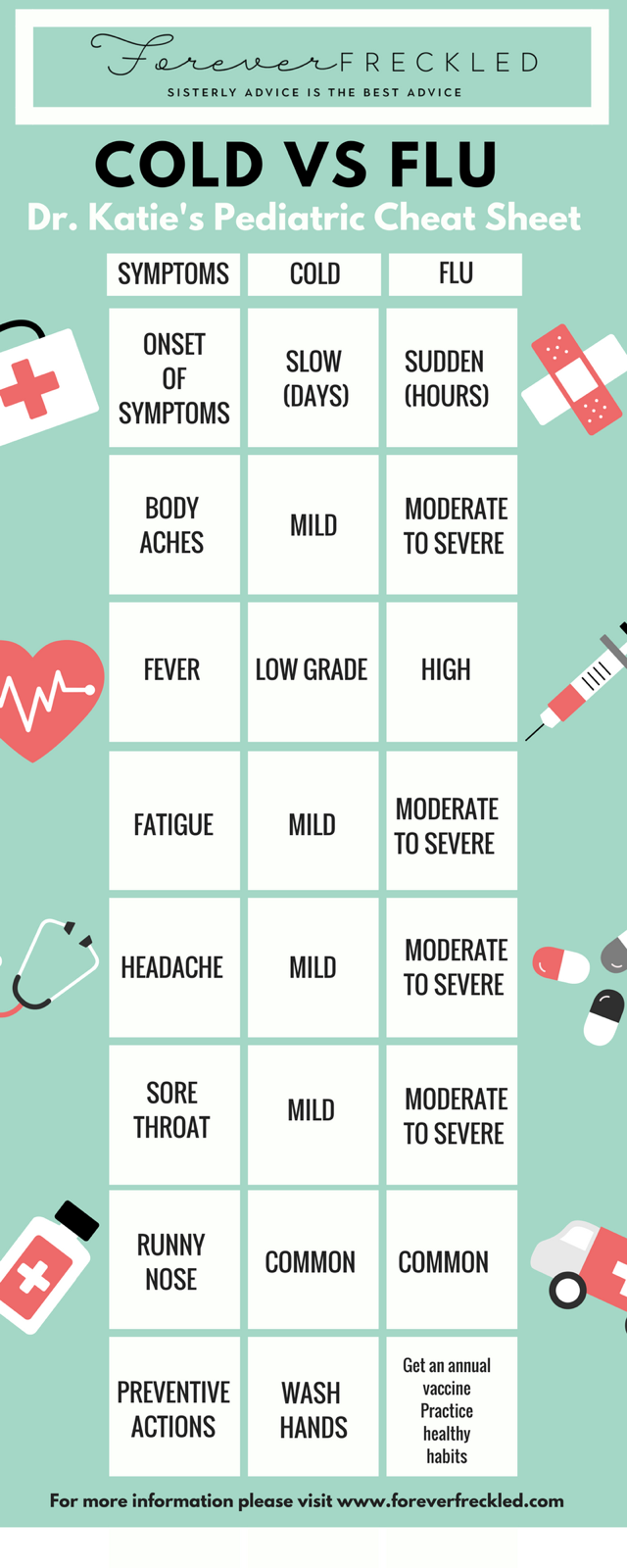
Is This Just a Cold or Is This The Flu?
The record breaking number of cases of influenza (flu) and the rising number of flu-related deaths have left parents terrified this season. As soon as their child starts to get the sniffles, is sleepier than usual, or experiences even a mild a fever, they are overwhelmed with anxiety and fear. Thousands of families rush to their doctor, wanting to know is this just a cold or is this the flu? I think it is important to start by saying that every child is different and the flu can present differently depending on the individual. However, there are some distinguishing features of the flu that can help differentiate it from the common cold. Answering three simple questions can quickly help you determine whether your child has a cold or if it is truly the flu?
1. Has your child recently been exposed to the flu? If you received a letter from your child’s school indicating that there were children out this week with the flu, you should be prepared for your child to get sick. The symptoms of flu generally come on suddenly and last longer than the common cold, so if you are a working parent, be prepared to take time off work to care for your sick child. Knowing that your child has been exposed allows you to take action sooner. Call your doctor as soon as possible to see if they think it is appropriate to prescribe antiviral medication. Make sure your house is stocked with fever reducers and a great humidifier.
2. Did your child’s symptoms come on suddenly or have they been getting gradually worse? One of the biggest distinctions between a cold and the flu is how quickly the onset of symptoms occur. The symptoms of the flu occur very suddenly. It is not unusual for a child to feel well enough to go to school in the morning, only to have them spike a high fever hours later at school. The symptoms of the common cold tend to be more progressive, typically starting with a mild sore throat and over the next day or two, symptoms getting progressively worse.
3. What symptoms is your child suffering from? Although they may share several common symptoms, the flu typically causes high fever, chills, extreme fatigue, body aches, and headache. A cold commonly results in a low grade fever, mild sore throat, runny nose, and cough. Although children may experience headache, fatigue, and body aches with a cold, they are typically more mild than those associated with the flu. We use the mnemonic FACTS (fever, aches, chills, tiredness, sudden onset) to remember flu systems.

We have partnered with the National Foundation for Infectious Diseases (NFID) to create a cheat sheet to determining whether the symptoms your child is experiencing are more commonly associated with a cold or the flu. Remember, these are just guidelines and if you feel your child does have the flu, it is important to have them evaluated by their doctor. Remember a flu vaccine not only helps your child from getting the flu but it can also protect them if they do get the flu by helping to decrease the severity of symptoms as well as the risk for complications. Keep them protected to help #FightFlu! Proper hand washing and getting a flu vaccine every year are necessary and important steps to preventing the spread of flu.

This post is my own professional tips and opinions! We are honored to be working with National Foundation for Infectious Disease to educate parents on the importance of the flu vaccine and how it can save lives. This post is sponsored, but these opinions are 100% my own.




